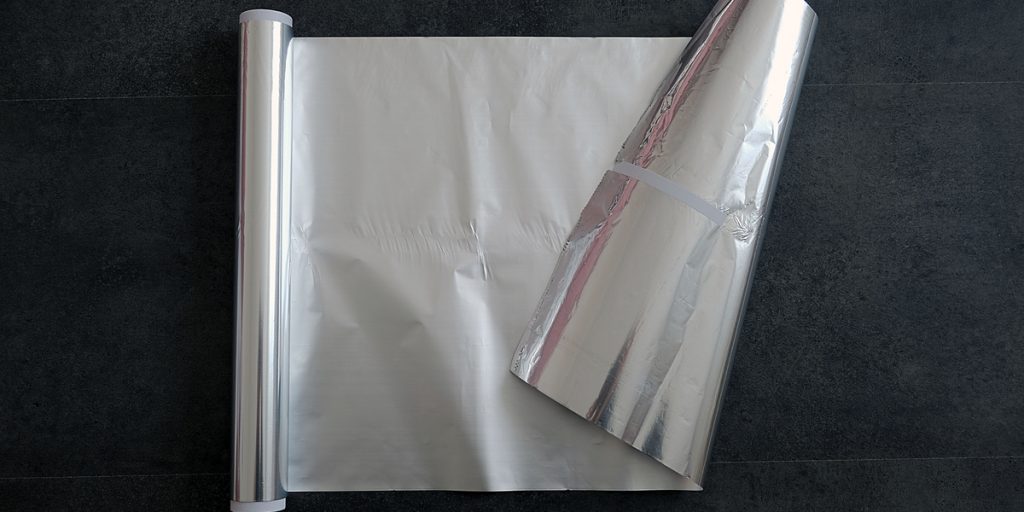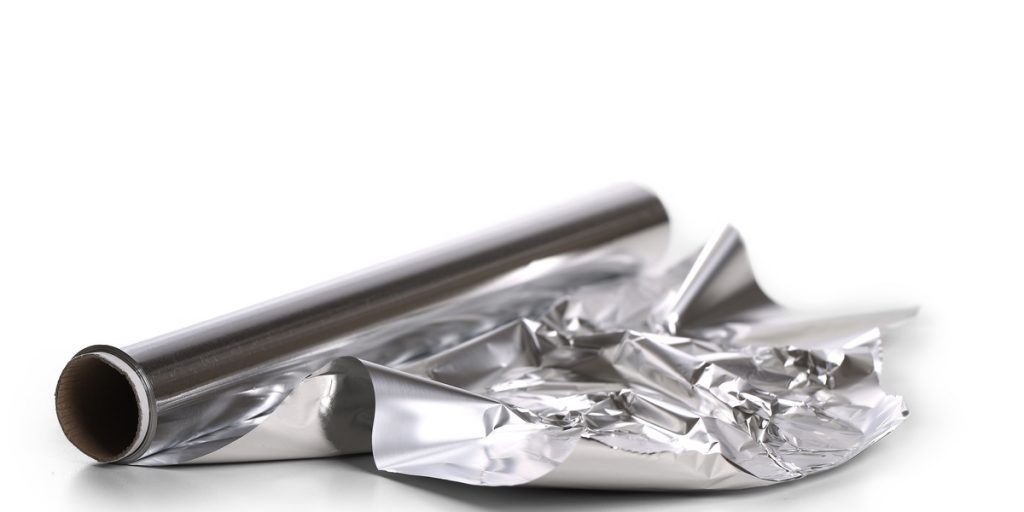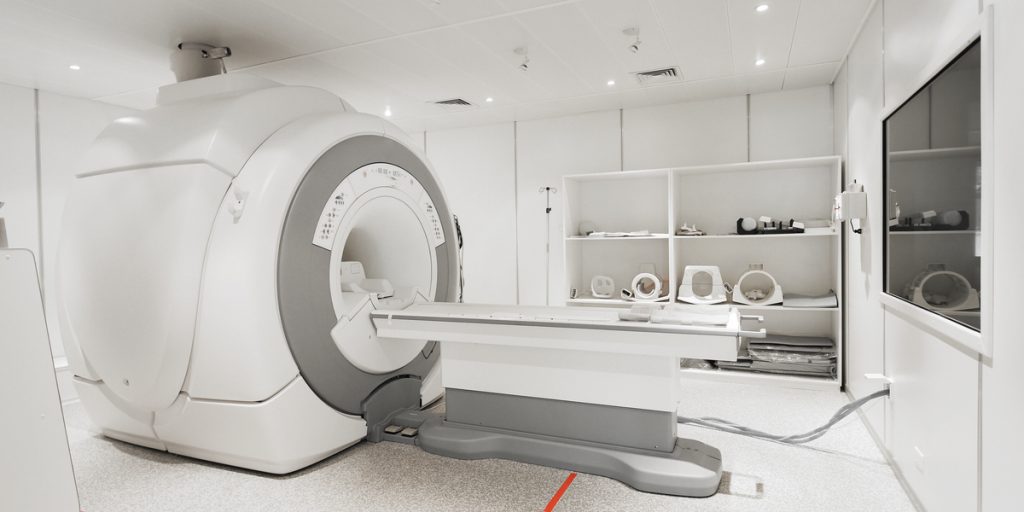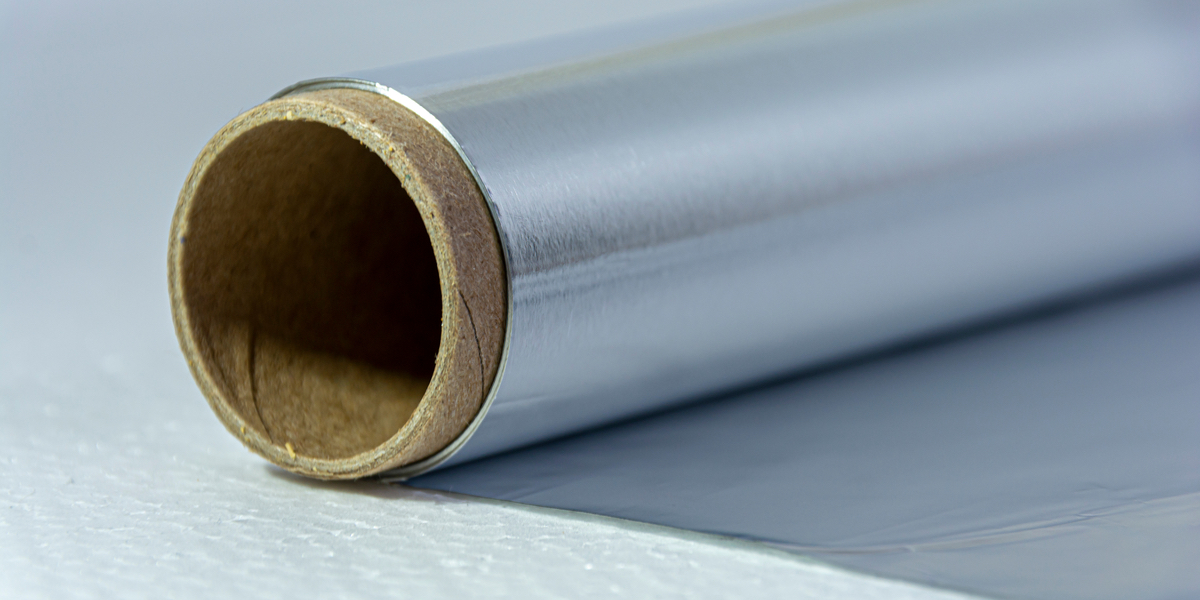As wireless devices make life much more convenient, they also bring a wide variety of health risks. Cancer, neurological conditions, and reproductive disorders are just a few linked to these devices. And it all comes down to the radiofrequency electric and magnetic fields, or RF EMFs, the devices emit.
In knowing the potential for harm, it just makes sense to want to protect yourself and your family. Making that difficult, however, is the fact that wireless devices are in use absolutely everywhere from schools to workplaces of all kinds.
Thankfully, one school of thought indicates that aluminum foil may serve as a cheap way to block radio waves and minimize the risks. So, to see if that assertion holds up, let’s explore these claims and see how well this material can protect people from exposure to RF EMFs.

What are Radio Waves?
Radio waves are just one type of electromagnetic radiation that surrounds us all each and every day.
Electromagnetic radiation has seven distinct regions with radio waves on the low-energy side. Since they are low-energy waves, they emit non-ionizing radiation that moves and vibrates atoms without removing electrons.
In the early days of technology, these waves only came from simple communication devices, such as televisions (Check for more info about TVs radiation) and radios. Keeping babies out of these is a good choice because it’s harmful (Check facts).
Today, the waves are now emitted by a wide range of wireless devices, such as:
- Mobile phones (Check mobile phone radiation chart)
- Baby monitors
- Headphones
- Wi-Fi routers (Check the minimum safe distance from a router in home)
- Radars
Wireless Networks
There are several different kinds of wireless networks, all of which emit RF EMFs.
Mobile phones, for example, use wireless wide area networks that send signals across great distances.
Baby monitors, on the other hand, may use local area networks to share information across the household.
Bluetooth devices use personal area networks to send and receive signals across a much more limited area.
Radio waves that go longer distances release more radiation than limited range networks, but all have the potential to cause health problems.
The strength of the RF EMFs also increases closer to the source. When you are holding your cell phone, it is sending more non-ionizing radiation into your body than when you are standing across the room from it.
Unfortunately, with the widespread use of wireless devices, it is virtually impossible to avoid radio waves through distance alone.
In many cases, you might not even know you are standing within a few feet of such devices. As you walk past a server room at a doctor’s office, for example, the radio waves pass right through you, undetected, and agitate the atoms in your body.
Even if you cannot do anything about exposure in public, you can reduce your exposure at home. That move can protect your body from damage and decrease the chance of health risks developing.
Check: If you’re keen to know about other materials that block EMF radiations, then check our exclusive article on it.
Reasons to Block Radiofrequency (RF) EMFs
As radiofrequency EMFs agitate the atoms in the body, they suffer damage that can lead to a number of health problems, including:
Cancer
As mobile phones started to become more popular, many international agencies began taking a look at the potential for harmful effects. As they explored the impact of RF EMFs, the studies revealed a link to the development of cancerous brain tumors.
In particular, a French national study showed an increased risk of glioma by those who have frequent exposure to radio waves. This type of brain tumor arises as the glial cells suffer damage from radiation, often impacting both the brain and spinal cord.
For this reason, researchers urged everyone to label RF fields as a probable human carcinogen and let people know about the risks. They also asked that additional researchers study this realm to find other risks and inform the public.
Neurological Disease
In an effort to find the cause of Alzheimer’s disease, or AD, researchers set their sights on looking at the impact of electromagnetic fields. Using rats, they explored the oxidative stress caused by these fields, watching for signs of AD. To objectively measure the effects, they used the Morris water maze test to record memory changes in the rats over an eight month period.
By the end of the study, they found that exposure to these fields is harmful to rats’ memory and oftentimes caused symptoms of AD. The rats showed a significant decline in their cognitive abilities in navigating the maze, despite going through it hundreds of times prior.
As humans and rats are similar in many ways, this shows that people could also suffer cognitive decline from EMF exposure. This is especially true for those who use wireless devices all day, every day, as regular exposure increases the overall level of oxidative stress.
Reproductive Disorders
Oxidative stress from exposure to EMFs can also lead to a number of reproductive disorders, as is revealed by a number of studies. As the EMFs impact the atoms, they increase the production of free radicals, cause proteins to misfold, and even damage DNA.
In both men and women, the damage disrupts the natural production of reproductive hormones.
It also reduces the function of sperm and inhibits ovulation, leading to infertility over time. If the sperm is able to reach the egg, radio waves can even prevent the fertilized egg from implanting in the uterus.
When pregnancy does arise, continued exposure to EMFs can harm fetal growth. Over time, this can lead to the reduced height and weight of the fetus. Fetal abnormalities can arise as well, though they are not as common.
Due to their discoveries, researchers proposed that people limit their exposure to radio waves. They also suggested that individuals reduce the damage by taking antioxidants that eliminate free radicals.
With an understanding of the health risks, it becomes quite clear that it is well worth the time and effort to protect yourself from radio waves.
Does Aluminum Foil Block Radio Waves?

Since it is made from metal, aluminum foil has the power to block radio waves. The thin sheet of metal acts as a shield and blocks the RF EMFs from reaching you.
This ability was discovered by Michael Faraday in 1836 when he fully covered a room in foil.
When he released powerful electric charges onto this outer surface, he quickly found that the foil fully blocked them from entering the room.
Now known as the Faraday Cage, this invention became the most popular way to protect areas from EMFs.
Many places use foil-like materials as electromagnetic shielding to block radio waves from entering key areas.
In hospitals, for example, they protect MRI rooms from electromagnetic fields using shielding materials all around.
Without that shielding, the MRI equipment cannot use their magnets to produce images, resulting in poor picture quality.

Attenuation
ust like the shielding, foil reduces the power of the electromagnetic signal, which is also known as attenuation.
Not all shielding is made equal, however, as each material has different attenuation abilities. Concrete walls, for example, have 10 to 15 decibels (dB) of attenuation, while foil is much more effective at 85 dB.
The high attenuation rate makes foil an excellent radio wave blocking method. And its low price makes it a good choice for many who want to keep their risk levels low as they navigate life in this wireless world.
Ideas for Using Aluminum Foil to Block EMF
Cell Phone Case
Although aluminum foil offers powerful protection from radio waves, it is not always so easy to know just how to use it. Since cell phones are the most prevalent in everyday life, it can be useful to make a foil phone case for when you carry it around in your pocket.
Since this fully disables the transmission of data to your phone, you would only want to use this method when you are not expecting an important call.
You can just wrap up the phone as you are traveling about, then take it out of the case when you can set it further away from you, like on a desk or table across the room.
Similar tactics can be taken with tablets, laptop computers, and other wireless devices. But instead of making them a case, simply place them in a cardboard box that is lined in aluminum foil. The box will act as your own personal Faraday Cage, keeping radio waves safely inside and far away from you.
Keep in mind that tin foil can’t reflect electromagnetic waves or radio wave efficiently. Blocking radiation with aluminum foil has been use for long. RF radiation is a band of invisible waves of non ionizing radiation. RF waves get partially reflected while thin foil is used. Otherwise take a large sheet to wrap the things multiple times. It works as a great barrier.
Wireless Routers
Another big emitter of RF EMFs in the home is wireless routers. If feasible, it could be a good idea to wrap it up at night or otherwise not in use, blocking radio waves from bouncing around your living space.
You will need to unwrap the router later on to use your wireless internet, so this step does take careful planning.
If home renovations are on the horizon, or better yet, you are building a new home, give radiant barriers a try. When you have these robust foil barriers installed under the drywall, they reduce EMF radiation from entering your home at any given time.
Since they do not protect you from devices inside the home, however, you still need to use the other tactics to reduce exposure to EMFs.
Wrapping it Up
Although wireless devices are all over the place these days, you do not have to simply waltz through life hoping for the best, as you have aluminum foil on your side.
By using this low-cost solution as a barrier, you can decrease your exposure to RF EMFsday in and day out. All you need to do is pick up a roll for a couple dollars and use all the methods that make the most sense for the devices in your life.


